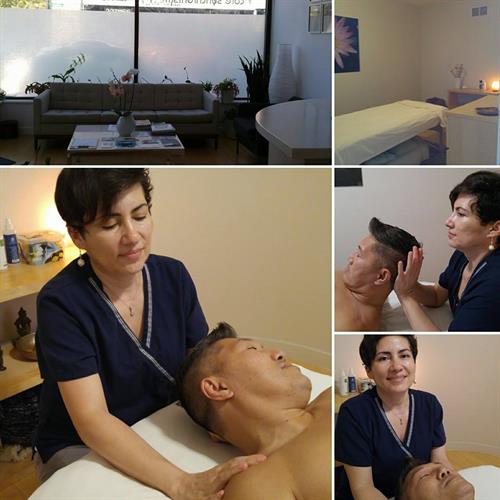 It’s a sign of the times we live in. If you have ever experienced jaw pain or popping, teeth grinding, ringing ears, chronic headaches, and other issues. You may have already suspected these can be related to muscle tension and mis-alignment in the temporomandibular joint (TMJ).
It’s a sign of the times we live in. If you have ever experienced jaw pain or popping, teeth grinding, ringing ears, chronic headaches, and other issues. You may have already suspected these can be related to muscle tension and mis-alignment in the temporomandibular joint (TMJ).
How chronic stress is a factor:
Stress has a role on these particular muscles where fear and other intense emotions take hold. You may know it as the body/mind connection. When we experience fear, for example, a common defensive response is to instinctively clench core muscles in order to protect our most vulnerable areas, the belly and throat. When contracted so suddenly it is often difficult for muscles to relax again completely, and when they stay tense this can feed a cycle which keeps the brain in a state of stress and in turn reinforces tension in the deep hip muscles.
There is a wealth of mainstream medical research on the many physiological effects of the fight-or-flight stress response, including many studies which focus on the way stress hormones effect the brain and suggest that emotionally (and therefore hormonally) charged experiences may actually change the shape of our brains. This theory helps to explain why it can be difficult to “turn off” the physiological stress response.
The hip-jaw connection:
In this article I would like to bring to light what you may have over looked in addition to stress there is a mechanical connection between the jaw and the hips. It might seem that the jaw is distance away and unrelated to the hips but when you think of our body’s mechanical chain in motion it makes sense.
A general example, can be if the right side of the jaw is more clenched than the left, look to the right side hip muscles they are often more tense than those on the left. Similarly, if the mandible (jaw bone) protrudes forward, it is common for the pelvis to also be tilted or jutting forward from its more normal, comfortable position. [1]
One study, on the effects on hip pain of myofascial release massage techniques performed at the jaw, strongly suggested that clenching the jaw increased hip pain while massage therapy on the jaw relieved hip pain [2]. Another study measured cranial (skull) angles in relation to angles of the spine and pelvis, and very reliably correlated jaw angle with both pelvic alignment and with curvature of the lower back [3].
Using postural analysis and finding that relationship we can see how spending most of the day sitting at a computer, for example, can lead to chronic shortening of the hip and neck flexors (among other issues) and how the forward head position this often creates can put stress on the jaw.
The jaw and pelvis are deeply connected. Subtle postural issues, emotional habits, or injuries in one area might contribute to restriction in another; it teaches that seemingly small restrictions in fluid and tissue along the spinal column can have echoing effects on pain and range of motion which can be just as significant as the impact of major muscle groups [4].
Self care tips:
Being mindful and aware you are grinding or clenching is one step toward relief. So avoid the following
- Avoid putting undue stress on the jaw joint from yawning widely
- I am guilty of this, holding your jaw with your hand while leaning, or slouching at the computer.
- If you need to be at the computer for long periods of time, set a timer so that you are moving around and are constantly reminded that posture is important and can contribute to TMJ pain issues.
Contract and Relax technique for the jaw, I’ve posted this technique on Facebook:
- Place a soft fist below your jaw (as if you were posing for a cheesy portrait). Using your fist as a barrier to keep your jaw from moving, depress your jaw into your fist (open your mouth slightly). Hold and silently count to 7.
- Note: This is one of those times when more is not better. When opening your jaw, you just want to ‘turn on’ the muscles. Using lots of force may lead to muscle strain, and that’s what we are trying to avoid, right?
- Relax your jaw as much as possible, and count to three.
- Repeat these steps at least 3 times, or until your jaw feels more relaxed.
Lastly, not self care but supporting you in your efforts by getting assessed and treated with Structural Balance can address the clenching jaw, grinding your teeth, tension headaches and the loss of body balance. I hope this was helpful, Mara
References
1 The relationship between the pelvis and stomatognathic system: A position statement.
3 Relationship between Thoracic, Lordotic, and Pelvic Inclination and Craniofacial Morphology in Adults
4 www.upledger.com
